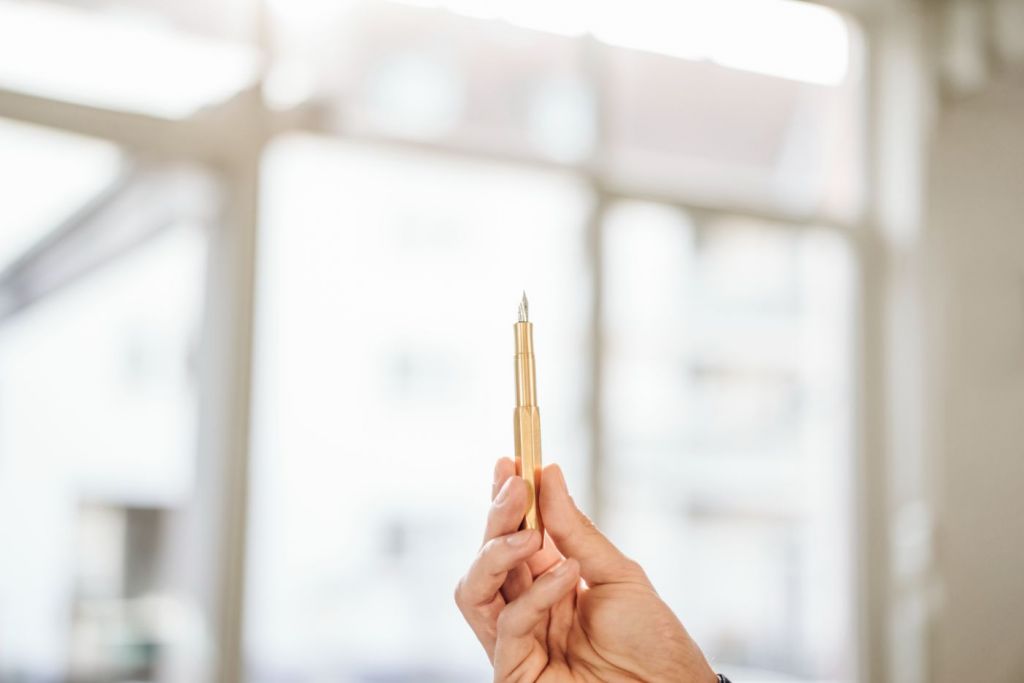How Long Do Fountain Pen Nibs Last?

If you're worried about your fountain pen nib wearing out with heavy use, you don't have to. Also, vintage fountain pens will probably write just fine.
Most nibs will last at least 10-30 years. High-quality nibs can last up to 75-100 years, depending on the material. Gold nibs may wear faster, but not necessarily. Untipped nibs will last a couple of years.
There are many factors that affect the longevity of your fountain pen nib, some of which you can fix by a simple swap. Nibs will wear out faster when using a lot of writing pressure, or writing on really course materials. Read on to learn what to do, and what to avoid.
In this article:
Fountain Pen Nibs Should Last 100 Years
Fountain pen nibs are made of metal: mostly stainless steel or gold. Nowadays, the nib is typically dipped in iridium, making it very wear-resistant. This means fountain pen nibs can easily last a lifetime if properly taken care of.
Nibs do not last forever, although they are made to last a lifetime. Fountain pen nibs do wear out due to friction, but only after extended use. The speed of wear depends on nib material, paper quality, ink viscosity, and writing pressure.
A nib improves with wear
You can call this process wear, but you can also call it fit, in the same way your new shoes mold to your foot. Nibs will wear over time based on your hand, the way you write and apply pressure. Over time, the nib becomes more enjoyable for you to write with, while other might dislike it.
This process can be problematic for vintage pen users; some old pens may not write well for you, and while the nib may be perfectly fine, it may simply not be appropriate for your hand.
Factors That Affect Nib Wear
Here are the most important factors that affect nib wear:
- The quickest way to destroy a fountain pen nib is dropping it on its tip.
- A heavy hand wil wear out a nib more quickly.
- Iridum tip nibs will wear more slowly.
- Gold tip nibs will wear more quickly.
- Fine paper quality will decrease nib wear, whereas coarse paper will increase wear.

Dropping a fountain pen on its nib ends it
When you drop a fountain pen, it will most likely drop nib first, since that's where it's center of gravity is. That's most fountain pen lovers nightmare, since it will end your fountain pen promptly.
When a nib hits the ground, the tines will misalign - get out of whack - which will result in a horrible writing experience, railroading (the ink not flowing, especially in the center of the line) and scratchiness. You will most likely leave this pen alone from now one.
Heavy writing pressure wears a nib out
If you have a 'heavy hand', you will wear out nibs more quickly than others. Fountain pens don't require any pressure at all to write, so whenever ballpoint pen users use a fountain pen, they typically apply too much pressure. This may spread the tines of the nib to the point where they won't spring back.
Another thing that happens with continuously putting too much pressure on your nib, is a wearing pattern called 'baby bottom'. You get this pattern by the tines wearing on the inside edge, instead of on the tip itself. The result is railroading and a hard starting pen.
Your Nib is Worn Out if You Notice This
There are many signs of a worn out nib, but most of them can also be due to other issues, so I never write off my nib immediately. I first try other solutions, and do a visual inspection (more on that later). If all else fails, I write it off as a loss.
Your pen is railroading after cleaning
I've already described railroading above. When your nib consistently pulls lines like it has two thin contact points instead of one large one, and feels scratchy and dry, it could be a nib misalignment or baby bottom.
However, it could be something more innocent, like a dirty or clogged up nib, so I recommend a good clean first.
Your pen is hard-starting after cleaning
If your pen is a permanent hard-starter, that is to say the ink won't flow, even after thorough cleaning, it may indicate nib problems. w
Start problems are most likely the result of a clogged up feed, which can be easily fixed by a deep clean, but sometimes it may be a symptom of tine misalginment.
Sometimes All You Need is a Nib Tune
In some cases, your nib isn't neccessarily worn out, but simply out of whack. The tines can be misaligned (tines are the tips of the tip, if that makes sense) - we call this 'baby-bottom'. It can be fixed.
Sometimes the tip has to be grinded or polished to make it write better.
The easiest way to assess your nib is by using a jewelers loupe: simply do a visual inspection. Check whether the tines look aligned or are spreaded. Check whether the tip looks even and smooth.
You can find the jewelers loupe I use in the maintenance gear section here.
You Can Replace Fountain Pen Nibs
Once a fountain pen nib is worn out, you can replace it. With friction fit nibs, you can easily do this yourself. More integrated nibs (ie. glued or hooded) may have to be replaced by a dealer or the manufacturer.
How Long Should a Fountain Pen Last?
A fountain pen should last for at least 10-20 years, up to 100 years with proper care and maintenance. Materials affect fountain pen lifetime, but the way you use it is just as important, perhaps even more.
Did you find the answer to your specific question?
👍 13 👎 2
Leave a comment